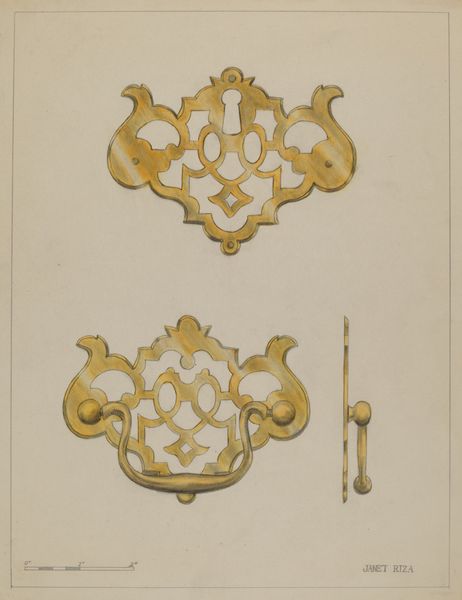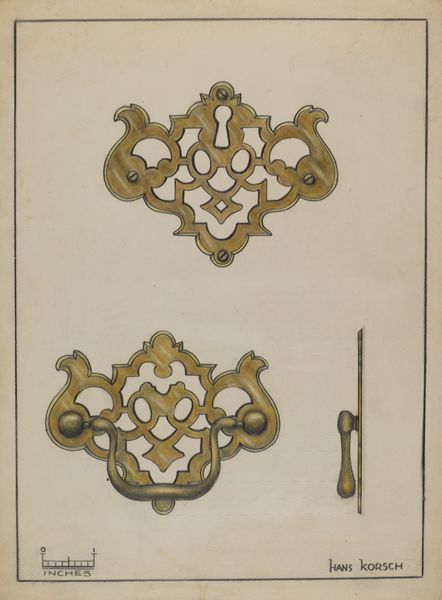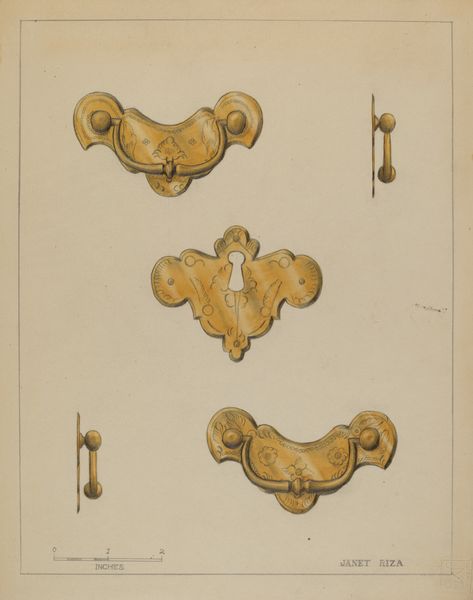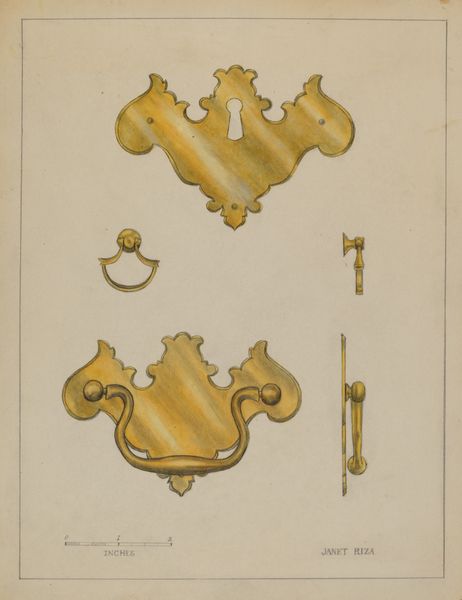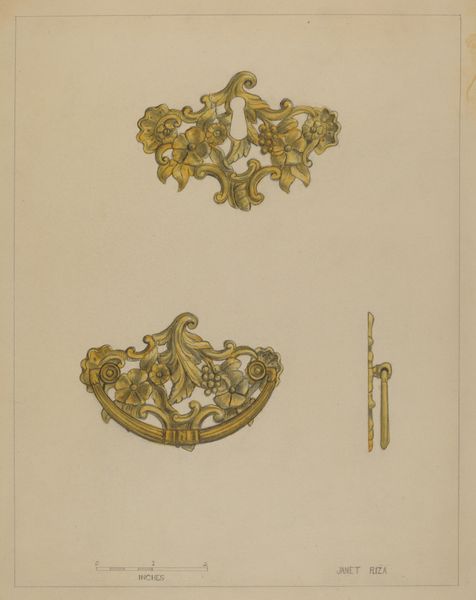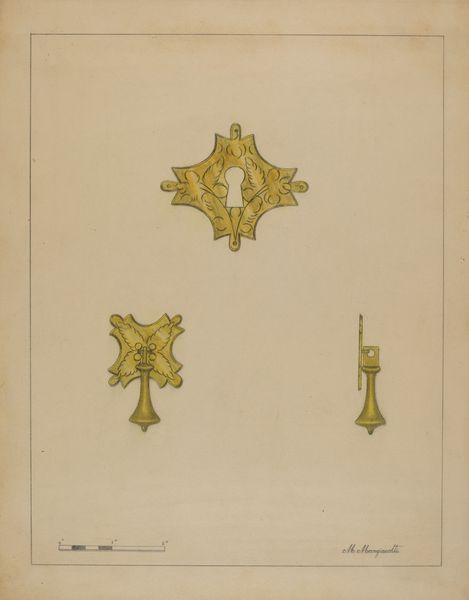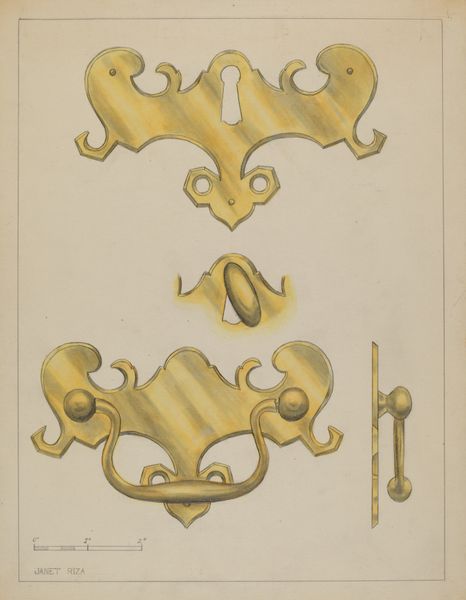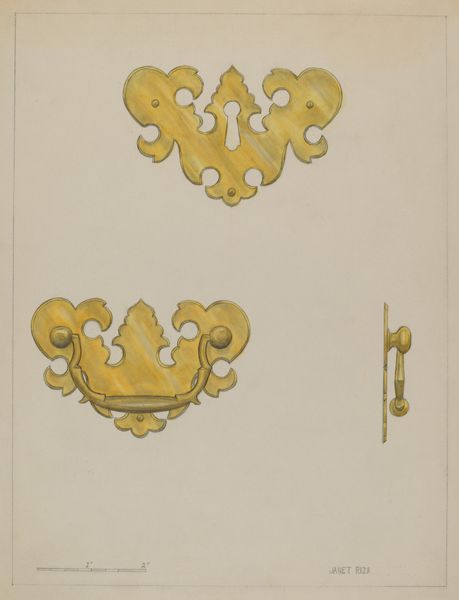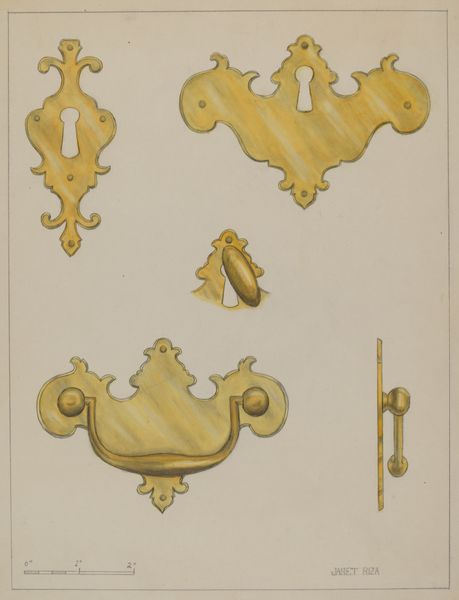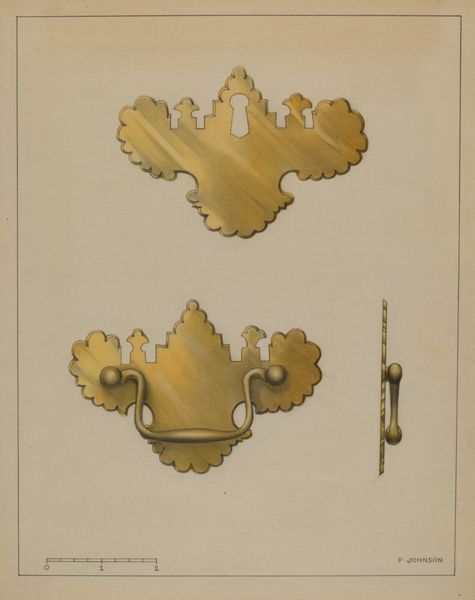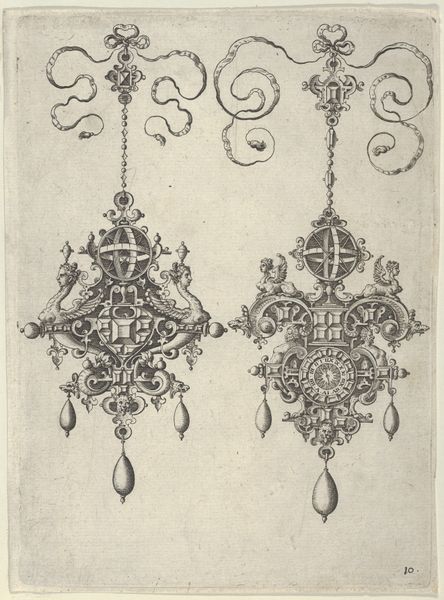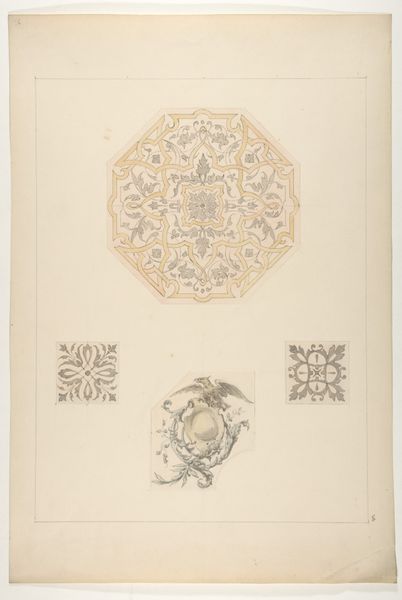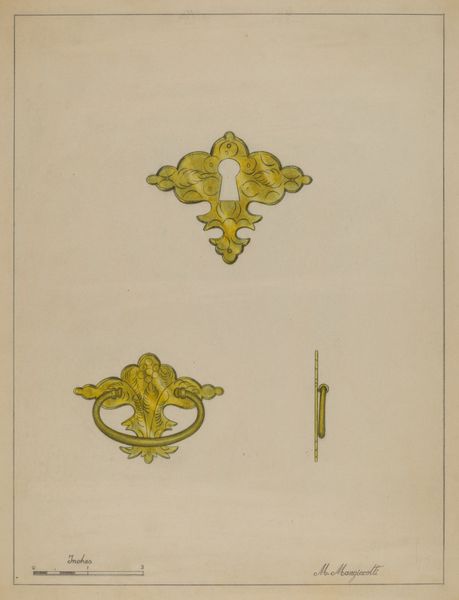
drawing, paper, pencil
#
drawing
#
paper
#
geometric
#
pencil
#
decorative-art
Dimensions: overall: 28.4 x 22.3 cm (11 3/16 x 8 3/4 in.)
Copyright: National Gallery of Art: CC0 1.0
Curator: This is "Drawer Pulls and Key Plate" by Philip Johnson, a pencil and paper drawing dating to around 1936. The artwork presents several designs for decorative hardware, almost like a study. Editor: Immediately, I'm struck by the intricate detailing—there's a real sense of elegant craftsmanship evoked, even in a simple drawing. A delicate and elaborate mood. Curator: Indeed, the ornamental style recalls an interest in decorative arts popular during the mid-20th century. Note the symmetry in each design, reflecting principles of classical composition, but infused with a touch of modernity. The lines, though seemingly simple, create a play of light and shadow, adding depth. Editor: Absolutely. I wonder about the materiality implied. One can almost feel the weight and coolness of the metal the drawing aims to represent, suggesting bronze or perhaps brass. Think about the foundry where this might've been cast, the labor involved in each perfect curve. It raises questions about industrial production versus hand-craftsmanship during the era. Curator: Precisely. It embodies a tension—mass production tempered by artistic intervention. Look at the geometry; a recurring motif, softened by organic, flowing lines of the handles. This duality provides a compelling visual language. Editor: The artist must have thought about how such relatively minor material touches deeply affected architecture and people. What level of skill was expected of metalworkers? Were these pieces affordable to a wide demographic, or luxury items, and did the design impact their accessibility? Curator: An excellent point. It's a fascinating convergence of form and function, illustrating how even utilitarian objects can embody aesthetic intention and elevate the surrounding structure. This drawing highlights decorative hardware’s capacity to influence the observer. Editor: Reflecting on it, I appreciate that the drawing is an interesting study of design but also, fundamentally, is the study of material and work processes—from artist, designer, to metalworker and, lastly, the consumer who grips the material daily. Curator: I quite agree; by combining elegance and practicality, this sheet allows for contemplation about design as art, not just décor.
Comments
No comments
Be the first to comment and join the conversation on the ultimate creative platform.
